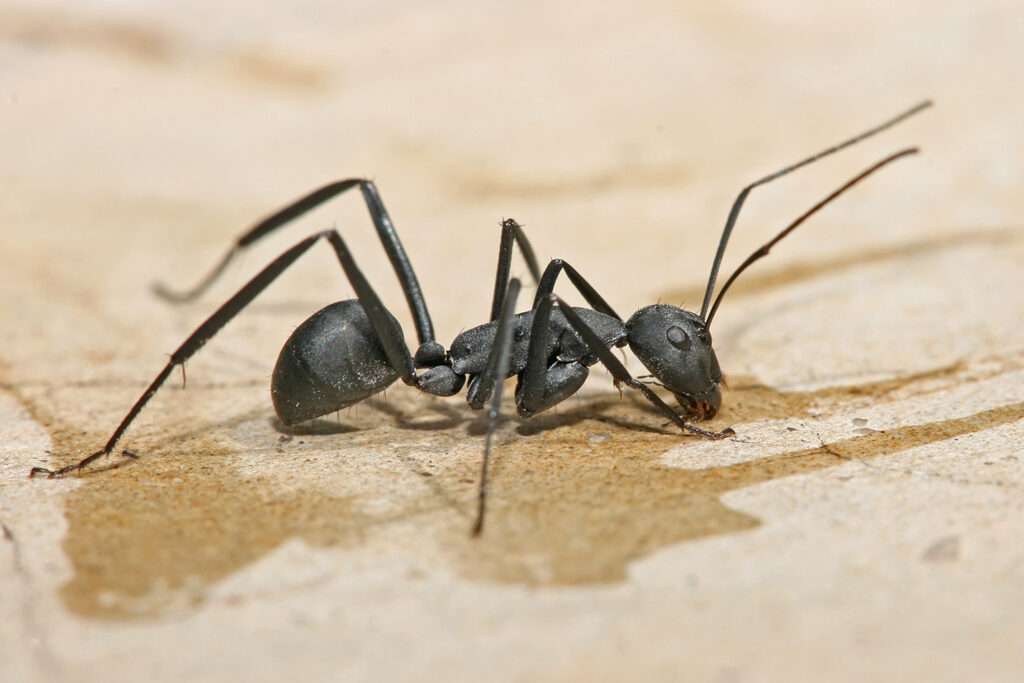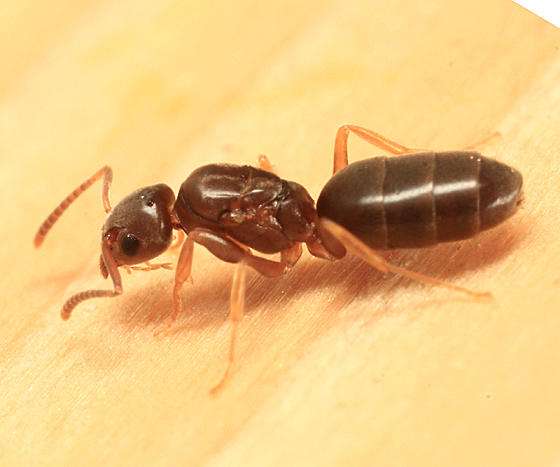
Large (0.3 to 1 in or 8 to 25 mm) and native to many forested regions of the world are carpenter ants (Camponotus spp.).
They prefer to use dead, damp wood to make their nests, which are made of tunnels that they have bitten out with their teeth or mandibles. But unlike termites, they don’t eat wood; instead, they leave behind a substance that resembles sawdust outside their nest. Carpenter ants will occasionally hollow out whole trees. They are an ubiquitous issue and a significant source of structural damage. They also frequently infest timber buildings and structures.
Description
With workers measuring 4–7 mm in small species and 7–13 mm in large species, queens measuring 9–20 mm, and males measuring 5–13 mm, Camptonites are typically huge ants. At least the maximal diameter of the antennal scape separates the bases of the antennae from the clypeal boundary. Normally, the mesosoma forms a continuous arc from the pronotum to the propodeum when viewed in profile.

Habitat
Carpenter ant species live in damp, decaying, or hollow wood, most frequently in forest habitats, both inside and outside. They made passages between the various parts of the nest by carving “galleries” into the wood’s grain. Carpenter ants are more prone to invade specific sections of a home because they are more susceptible to moisture, such as the regions around and under windows, the eaves of the roof, decks, and porches.
It has been observed that carpenter ants build enormous underground tunnel networks. These networks frequently come to an end at a food source, frequently aphid colonies where ants harvest and consume honeydew. These tunneling systems are frequently found in trees as well. Usually, the colonies consist of a central “parent” colony that is encircled and supported by smaller satellite colonies.
Food
Carpenter ants are regarded as both scavengers and predators. These ants are foragers, usually consuming the remains of other insects or products made from them. They frequently consume insect fragments, aphid “honeydew,” or extrafloral nectar from plants. They have a reputation for consuming other sweetened beverages like honey, syrup, or juices. Aphids’ ability to survive can be improved by carpenter ants when they care for them. They tend to be a variety of aphid species, but they can also indicate a preference for some.
Nesting
Due to their sensitivity to environmental humidity, nesting Carpenter ants build the nests that hold eggs in areas that are typically humid. They are known as primary nests. Once the original nest is established and has started to mature, satellite nests are built. Older larvae, pupae, and certain flying creatures live in satellite nests. The only things that live in the major nests are eggs, freshly hatched larvae, workers, and the queen. Ants can build satellite nests in a variety of sites, even ones that are actually very dry, as they do not contain eggs that are sensitive to their surroundings. Some species, such as the Camponotus vagus, construct the nest in a dry location, typically out of wood.
Management
Eliminating moisture issues related to inner colonies through management would improve circumstances for colony longevity. Colonies must be located and dealt with properly throughout treatment. Because liquid insecticides seep into wood and may not spread throughout wall voids, insecticidal dusts are frequently employed there because ants will trail the dust back to the colony. Hiring a pest control expert with the right tools and knowledge to treat wall voids may be a good idea. Infested wood can occasionally be discarded or vacuumed up to get rid of colonies. In these circumstances, pesticides might not be required.
Table





